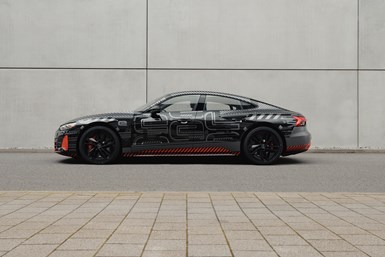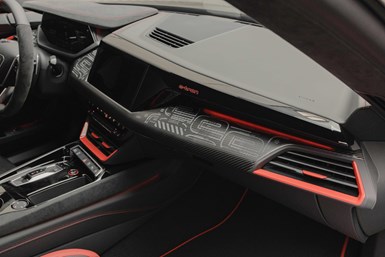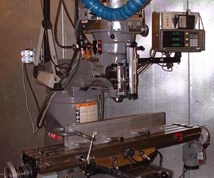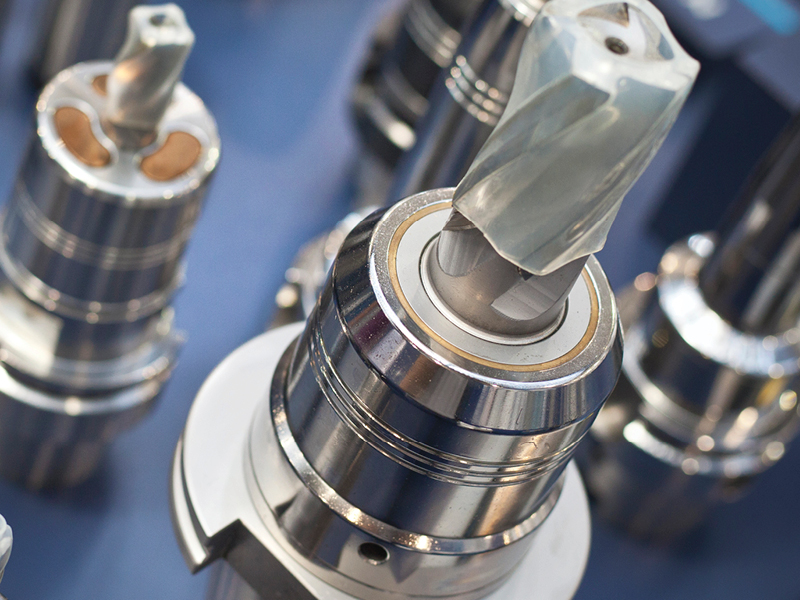
Not only does the limited-edition RS e-tron GT project_513/2 feature an exterior wrap, but there are special black finished 21-inch wheels and front and rear ceramic brakes painted red.
Photo Credit: All photos by AudiAlthough Audi of America had a 47% growth in its battery electric vehicle sales in 2022 compared to 2021, its third consecutive year of year double-digit growth for EVs—with a total of 16,177 units sold (among the e-tron, Q4 e-tron, e-tron Sportback, e-tron GT, and Q4 Sportback e-tron), the company is looking at ways to boost sales of its EVs.
One of the ways it is doing this is with finishing.
Featured Content
And although it isn’t going to move the sale’s needle a whole lot—it is limiting sales to a total of 75 units in the U.S., and will be available only in the U.S.—the 2023 RS e-tron GT project_513/2 will unquestionably be sold out in a blink its base $179,900 MSRP notwithstanding.
Why?
Well, the fact that this two-motor vehicle that produces 637 hp can go from 0 to 60 mph in 3.1 seconds doesn’t hurt.

While prototype vehicles that are disguised with paint, wraps, canvas and other things that are meant to break up the lines or to confuse the cameras of spy photographers, with the RS e-tron GT project_513/2 Audi is using camo to its advantage—sales advantage.
But because the RS e-tron GT project_513/2 appears to be a prototype thanks to the use of a camouflage wrap that is modeled on the graphics used when the car was undergoing global prototype testing.
The wrap is applied at the factory in Brussels, Belgium, where the vehicle is built.
It is a breathable, anti-static material that has the original red and black color scheme printed on the surface.
Inside, Too
And interior finishing is changed, as well.
The project_513/2 has the first use of the color red for the four-ring Audi logo. That red is used to paint the air vents on the inside of the car.

Note how the interior surfaces, especially on the instrument panel, echo the exterior camo pattern. That IP surface includes carbon fiber, a special foil and a glass-like material.
Another exterior echo on the interior are camo graphics on the instrument panel. It includes carbon fiber inlays. There is a “partial matting” process used, which involves using a special foil to mask the base component that is then precisely (primarily) hand cut to reveal the underlying surface. Then a glass media material is applied over that in order to provide a consistent look.
Given that, somehow that $179,000 price tag doesn’t look so high, especially when you take into account things like an embossed leather armrest; ceramic brakes; carbon fiber roof, exterior door inlays, mirror caps, and door sills; and even the project_513/2 logo etched on the rear quarter glass.
The RS e-tron GT project_513/2 goes on sale this spring. Good luck trying to get one of the 75.
RELATED CONTENT
-
Supply Chain Woes Yield Opportunities for Manufacturers
As companies scramble to build more robust supply chains, manufacturing events are aiming to help North American manufacturers find new opportunities.
-
Korea Shows It Can
Machine tool builders in Korea have been playing a catch-up game for the past decade. A review of current developments in machine tool technology indicates that Korea is rapidly pulling up with manufacturers in Japan, Europe and the United States. The products from Korea closely match their counterparts from other global suppliers in terms of capability and quality.
-
More Effective Camshaft Machining
A leading manufacturer of high-performance valve train components installed a twin spindle/twin-turret lathe to bring camshaft machining work in-house. Here, the company explains how it has become more effective using its multifunction lathe to produce small batches of custom racing camshafts.



.jpg;width=70;height=70;mode=crop)









 (1).1676494398075.png)

